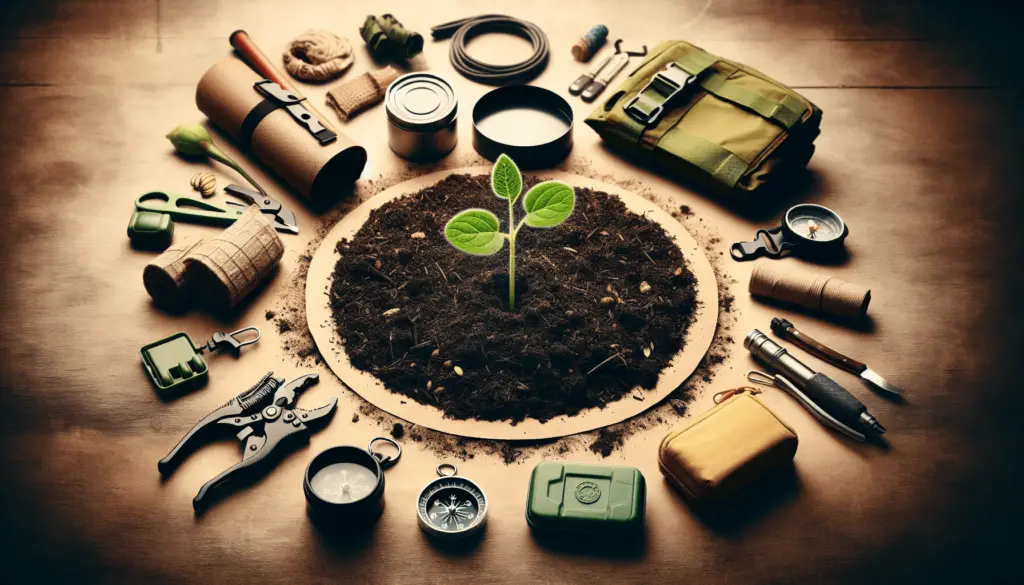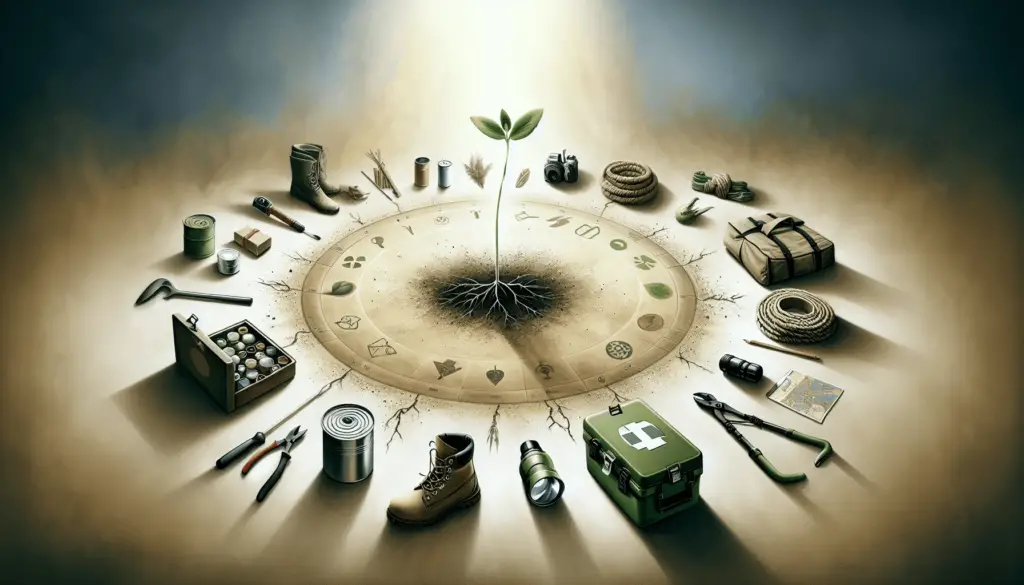Are you prepared for any unexpected emergencies or disasters? Creating a prepping plan that evolves with your changing needs is crucial for long-term readiness. In this article, we will guide you on how to develop a prepping plan that adapts to your evolving circumstances, ensuring that you are well-equipped for any situation that may arise. Whether you are just starting your preparedness journey or looking to enhance your existing plan, this comprehensive guide will provide you with the essential steps to create a prepping plan that grows with you.

Define Your Goals
When it comes to creating a prepping plan, it’s essential to first define your goals. This involves identifying the potential risks you want to prepare for and setting specific and realistic goals for each risk. Take some time to assess the various scenarios that could potentially pose a threat to your safety and well-being. Are you concerned about natural disasters such as hurricanes or earthquakes? Or do you want to be prepared for civil unrest or a financial crisis? By understanding the risks you face, you can set clear goals that address each one.
Assess Your Current Assets
Once you have defined your goals, it’s time to take stock of your current assets. This involves evaluating both your supplies and resources, as well as your skills and knowledge. Start by going through your existing prepping supplies and determining what you already have on hand. This will give you a better idea of what you need to acquire to be fully prepared. Additionally, evaluate your skills and knowledge in areas such as first aid, self-defense, and basic survival skills. This assessment will help you identify areas where you may need to learn new skills or seek additional training.
Identify Your Needs
After assessing your current assets, it’s important to identify your needs. This means determining the essential items necessary for each risk scenario you have identified. Consider factors such as the duration and intensity of potential emergencies. For example, if you live in an area prone to hurricanes, you may need to stock up on non-perishable food, water, and other supplies that can sustain you for an extended period of time. By understanding your specific needs for each risk scenario, you can prioritize your purchasing and preparation efforts.
Create a Budget
Creating a budget is a vital step in developing your prepping plan. Estimate the costs associated with your plan, including the purchase of necessary items and supplies. It’s important to be realistic about what you can afford and allocate funds accordingly. Consider setting aside a certain amount each month specifically for prepping purposes. This will help you stay on track with your budget and ensure that you can steadily build up your supplies over time.

Develop a Storage System
A well-organized storage system is crucial for maintaining your prepping supplies. Designate a specific area in your home for storing your supplies. It should be a secure and easily accessible space that can accommodate your needs. Once you have your storage area established, it’s important to organize and categorize your supplies. This will make it easier to find what you need quickly, especially in high-stress situations. Consider using shelves, bins, or other storage solutions to keep everything tidy and accessible.
Establish a Rotation Schedule
To ensure the reliability and freshness of your supplies, it’s important to implement a rotation schedule. This involves regularly using and replacing stored items. Certain supplies, such as food and medications, have expiration dates and need to be cycled out periodically. By establishing a rotation schedule, you can avoid wasting resources and ensure that your supplies are always in good condition. Keep track of expiration dates and make it a habit to regularly check and replenish your stock.
Learn New Skills
Preparing for emergencies goes beyond stockpiling supplies; it also includes acquiring the necessary skills for survival. Identify and prioritize the skills needed for survival in different scenarios. This might include first aid and medical skills, self-defense techniques, navigation, or even basic construction skills. Seek training and practice to improve these skills. Consider taking courses or workshops, joining local survival groups, or participating in outdoor activities that will allow you to develop and refine your skills.
Create a Communication Plan
Communication is key during emergencies, so it’s crucial to establish a reliable communication plan with your family and friends. This plan should outline procedures and protocols for staying connected, even in the face of power outages or disrupted infrastructure. Determine a primary method of communication, such as walkie-talkies, cell phones, or designated meeting points. Make sure everyone in your group is aware of the plan and knows how to use the chosen communication methods. Regularly review and update this plan as needed.
Build a Network
Connecting with like-minded preppers and survival communities is an excellent way to enhance your preparedness efforts. Building a network allows you to share knowledge, resources, and support with others who have similar goals and interests. Seek out local prepper groups or attend survival expos and conferences to meet others in the prepping community. You can learn from their experiences, exchange tips and ideas, and even trade or barter for supplies. Building a network can provide additional security and peace of mind knowing that you have a support system in place.
Regularly Review and Update
Prepping is not a one-time task; it requires ongoing effort and maintenance. Schedule routine assessments of your prepping plan to ensure that it remains relevant and effective. Regularly review your goals, inventory, skills, and communication plan. Make necessary adjustments and additions as your needs and circumstances change. Stay informed about potential risks and keep up with any new developments or technologies that could enhance your preparedness. By regularly reviewing and updating your plan, you’ll be better prepared to handle any challenges that come your way.
In conclusion, creating a prepping plan that grows with you requires defining your goals, assessing your current assets, identifying your needs, creating a budget, developing a storage system, establishing a rotation schedule, learning new skills, creating a communication plan, building a network, and regularly reviewing and updating your plan. By following these steps and taking an organized and proactive approach to preparedness, you can ensure that you and your loved ones are ready to face any emergency that may arise. Stay informed, stay prepared, and stay safe!
